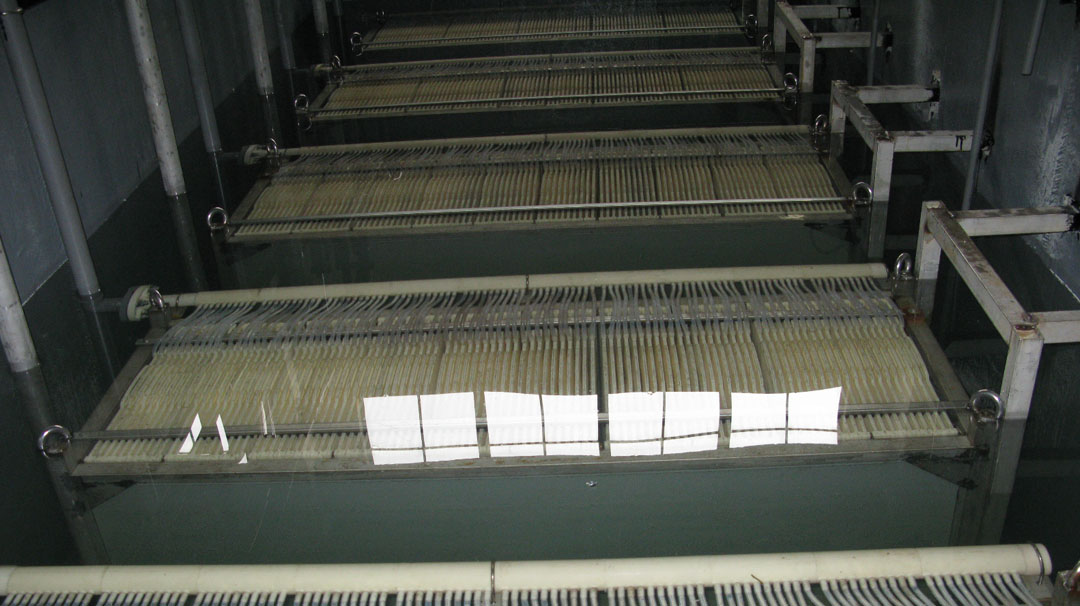
Membrane bioreactors (MBR) are a type of sewage treatment system that combines the functions of traditional activated sludge systems with membrane filtration. MBR are becoming increasingly popular as they offer a number of advantages over other types of sewage treatment systems, such as a smaller footprint, higher effluent quality, and lower energy consumption. However, there are also some challenges associated with using MBR for sewage treatment. In this blog post, we’ll take a look at some of the challenges of using MBR and how they can be overcome.
One of the challenges of using MBR for sewage treatment is the risk of fouling the membranes. Membrane fouling occurs when particles build up on the surface of the membranes, reducing their ability to remove contaminants from wastewater. Fouling can be caused by a number of factors, including poor wastewater quality, high suspended solids levels, and low pH levels.
To prevent fouling, it is important to operate the MBR within the design parameters specified by the manufacturer. It is also important to regularly clean the membranes to remove any particles that may have accumulated on their surface. Various cleaning methods can be used, including backwashing, chemical cleaning, and physical cleaning.
Another challenge associated with using MBR is membrane degradation. The membranes used in MBR are typically made from synthetic polymers that are susceptible to degradation over time. Degradation can be caused by a number of factors, including UV exposure, temperature extremes, and chemical attack.
To extend the lifespan of the membranes, it is important to protect them from UV light and temperature extremes. Membranes can also be coated with a protective layer to help prevent degradation.
Using membrane bioreactors (MBR) for sewage treatment offers many benefits over traditional treatment methods but there are also some challenges that need to be considered. In this blog post, we’ve taken a look at some of the challenges associated with using MBR and how they can be overcome. By following the advice in this post, you can ensure that your MBR system operates effectively and efficiently for years to come.
Abuot Jiangsu Peier membrane
Jiangsu Peier membrane corp.,Ltd(Stock Code: 836744) was established in 2007 with a registered capital of 48 million Yuan, referred to as “Peier membrane industry”.
It is a high-tech enterprise focusing on the R&D, production, manufacturing and service of MBR flat sheet membrane products. Its Peier Product category as below:
- Flat Sheet Membrane Element
- Flat Sheet Membrane Element-Single Nozzle
- Flat Sheet Membrane Element-Double Nozzle
- Flat Sheet Membrane Element-3D Soft Support
- Flat Sheet Membrane Element-Renovated Membrane
- Flat Sheet Membrane Module
- Flat Sheet Membrane Module-Module-Single Nozzle
- Flat Sheet Membrane Module-Module-Double Nozzle
- Flat Sheet Membrane Module-2S(Double Deck)
- Flat Sheet Membrane Module-3S(High Flux)
- Flat Sheet Membrane Module-Mini Module
- MBR System
- MBR System-Laboratory Test Equipment
- MBR System-Pilot Equipment
- MBR System-Package System
Peier membrane always adheres to R&D and cooperation with well-known universities at home and abroad, such as Tsinghua University, Sydney University, Nanjing University of technology, Changzhou University and Jiangnan University.
It is the editor in chief of the national industry standard HY/T252-2018 “submerged flat membrane element for water treatment”.
At present, it has 6 invention patents, 46 new utility patents, 1 appearance patent and 4 software works.